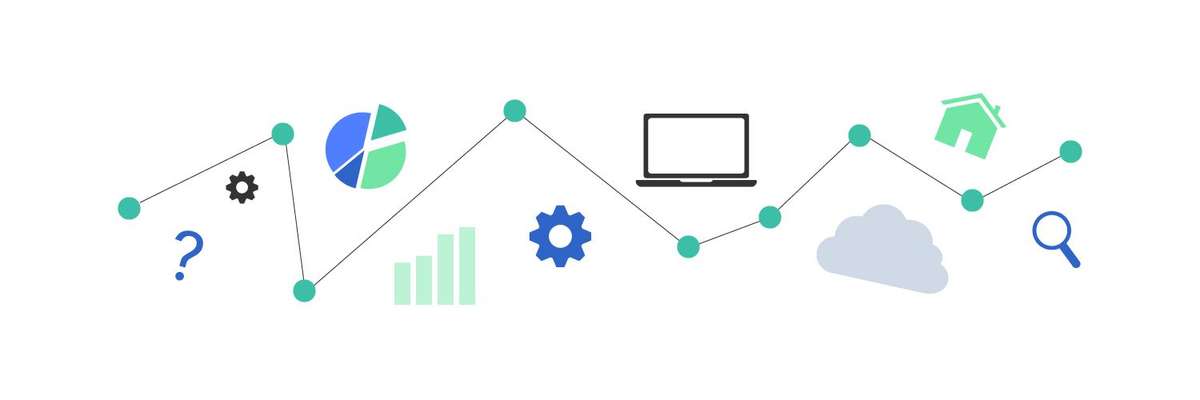Request a brochure
To request your brochure, simply fill in the form below and we will email it directly to you...
The SEO Breakdown

What is SEO?
Search Engine Optimisation (SEO) is the process of increasing the visibility of websites and webpage to the users of a search engine. The term refers to the improvement of unpaid results and excludes advertisements. All search engines have their own algorithms to download pages and filter out the most relevant and reliable pages.
You can find out more about the basics of SEO with our blog, ‘What is SEO?’
Web-Crawlers, Bots and Spiders
Search Engines download and categorise your website pages using web crawlers, otherwise known as spiders or bots. These are software programmes that are sent out by search engines like Google to request pages and download copies of them to the server. Your URL, your website’s unique codes, need to be made accessible and downloadable for search engines. Google refers to this process as ‘indexing’. This can either be enabled in your server control panel or for the more adventurous via configuration files such as .htaccess or web.config.
As well as good SEO scores, you need to have good readability scores. Tools like Yoast for WordPress look at both SEO and readability to make sure your website is easy for web crawlers to categorise your content.
Types of Searches
There are three types of searches Google looks for: Urgent, Repetitive and Distractive. Urgent searches are often questions asking how to do something or where to find something. Repetitive is often real time information such as live streaming of news or sports. Distractive would be classed as entertainment or social media content.

Factors of SEO:
There are many factors that search engine algorithms look for when determining how successful you have been at implementing SEO into your content.
Mobile Friendliness
Making sure your content has been optimised for multi-device responsiveness is crucial. You need your site to look good and legible on different screen sizes. If everything becomes all squished or hard to read, then your <u>bounce rates</u> will increase. Websites need to be responsive for good SEO scores and domain authority.
Page Speed
Image size, video size, code quality are just a few elements that can impact your page speed. Any errors or massive files are going to affect your page speed, how well your pages run and how quickly it downloads for your audience. Using YouTube or similar as a host for videos is just one way in which you can improve page speed as your data for the video is only streamed (downloaded) when the video is played instead of being downloaded on the initial page load which is what happens when it is hosted direct on your server and not on a streaming service such as YouTube.
The quality of the web host also has a huge factor as to how well your page speed is ranked, the server needs to instantly respond and download data quickly, if there is a bottleneck the bots will find it and your users will potentially bounce. The smoother your website runs, the better the user experience, and therefore the better your SEO score.
Good UX (User experience)
UX and UI have been directly linked to your SEO scores. Search engines are using user feedback and user experiences more to rank websites. With good user experience your site is more likely to appear in organic shares and gain backlinks. When the customer is happy your SEO score is happy. Therefore, it is very important that your website is user friendly, your content is easy to read, and visually pleasing.
Optimised headings
You must have your keyword at the beginning of your main heading, otherwise known as a H1. To improve you SEO score further, it is recommended that you try to include your keywords in all further subheadings/ in your H1/H2/H3 etc. tags. Strategic placement of your keywords throughout your content is crucial for readability. However, do not overdo it with the keywords. Putting too many keywords in your content will just get you penalised for spam.
Security/ Accessibility
Alt tags are HTML attributes that describe an image. This helps for SEO as you can implement keywords into your image description. However, it also helps for SEO accessibility. Having a description that describes your images means that if the picture doesn’t load or someone is using a screen reader, they will still be able to have a good idea of what your image is trying to convey.
SSL Certificates are a type of digital certificate that provides authentication for a website and enables an encrypted connection. Having an SSL certificate means you have data protection, identity affirmation, government compliance and website credibility. This will improve your SEO and domain authority.
TLS is an updated and more secure version of SSL, it is a cryptographic protocol that provides end-to-end data security. As different applications communicate over the internet, the TLS protocol will provide the security needed for users to browse the web. In simple terms you know you have TLS if you have the padlock on your website address.
Usernames and Passwords are well established as a simple way to provide security for your website users. They act as your identification and authentication for sensitive personal details. Therefore, as it protects your personal information it leads to improved SEO scores as you are showing a specific effort towards providing website security.
URL/ Page Slug
URL lengths, URL paths, keywords in the URL, the URL string, and the URL slug are all essential for SEO and page ranking. The URL slug describes the page contents and helps users to find them via a search engine. Best practice for URL slugs are to concisely describe the page contents, ensure it contains your keywords, and accurate pathway structures are implemented. The more user-friendly, clean, and clear your URLs the better your domain authority and search engine results. If your URL is too long or has loads of numbers, session IDs and no keywords then you will be sacrificing your chances of ranking highly on the SERPs.
As an example our about page is
which is exactly what is says on the tin, don’t get carried away and go with.
https://ergo.agency/about-ergo-creative-agency-warwickshire
Social Signals
Make sure your social medias are accessible from all pages. Adding social media icons to all pages allows users to locate you easily and increasing your chances of being seen and gaining backlinks.
Keywords/ Keyword Density
You can have longtail or short keywords, but the most important thing is to research the organic searches of your keywords and your keyword density within your content. Google Trends is a great tool to identify which relevant words and phrases are being organically searched the most. You want to find a nice middle ground where it has a lot of organic searches but not too much competition covering that topic. If there is a lot of competition you must try even harder to make your content more useful, more original, or more of a hot take than any other page. Keyword density essentially tells you if your keywords occur proportionally to the rest of your text. Too many keywords will get you penalised for spam.
Links- Internal, external, backlinks
Internal links are important as all websites should have corner stone content that you want your content (like blog posts) to link back to. Another way you can use internal links is to keep people on your site. If your blogs can link in some way, then users are more likely to stay engaged with your website longer and are more likely to see value in your business. When a user sees value in your business then they will be more likely to become a customer.
External links act as recommendations in the eyes of web crawlers. The more external links you have on your pages the more of a network you can build with external companies.
Backlinks are other websites linking to yours. This acts as a recommendation for your content. It is pointless to even try to use fake backlinks as Google can locate and penalise fake links.
Domain Authority/ Age
Reputation is built over years or at a high cost. You can pay for backlinks, apply for awards that would provide backlinks or gradually gain them through being a trustworthy resource on the internet. The more trusted, viewed, linked to and well received your content is, the higher you will rank on the search engine results page (SERPs).
Word Count
All content needs to be a minimum of 300 words. In that same vein, make sure not to have chunks of copy longer than 300 words without being separated with subheadings. Web crawlers, like humans, don’t love massive blocks of text. It is good for readability to break up your text with images and subheadings.
Meta Data
Tags, Title, Description are not seen by within your content but are visible to web crawlers. These are crucial for web crawlers to find you as the first place you will be seen is on the search engine results page. The meta title tag or SEO title needs to be under 60 characters and tells web crawlers what the page is about and what keywords to focus on. The meta description summarises what to expect from the content once it is clicked on. It needs to be under 160 characters and have the keywords near the start. This is crucial for engaging users more so than web crawlers but can massively impact your click through rates and page ranking. A boring meta description leads to a lower click through rate. You can also make meta data tags for the colour of an item, the author or creator name, and the date your content was created. Meta tags are beneficial in all these areas for accessibility and SEO.
Schema, Open Graph and Twitter Cards
To ensure bots really understand what your content is, schema is critical. It is code that is added to your pages in a structured way that the bots can easily understand, it is very much hidden from human view though. In its simplest form it can tell bots your company name, address, and telephone number. This in turn will be displayed in search results making you instantly more contactable. If, for example, you are a shop, all your FAQ information and opening hours would be in the search results. Without this, schema bots are just making guesses as to what your website is trying to present, and they often get this wrong. Using the schema.org specification allows you to present to bots more concisely.
Another important factor these days is Facebook and Twitter. Facebook use Open Graph and Twitter use Twitter Cards. They are essentially meta data that defines what image and descriptions should be used when your web content is shared. Therefore, when someone shares your webpage, the preview will look nice within Twitter and Facebook respectively.

Want to find out how we can help with your SEO? Check out our case study on what we did for Entertainment Nation here.